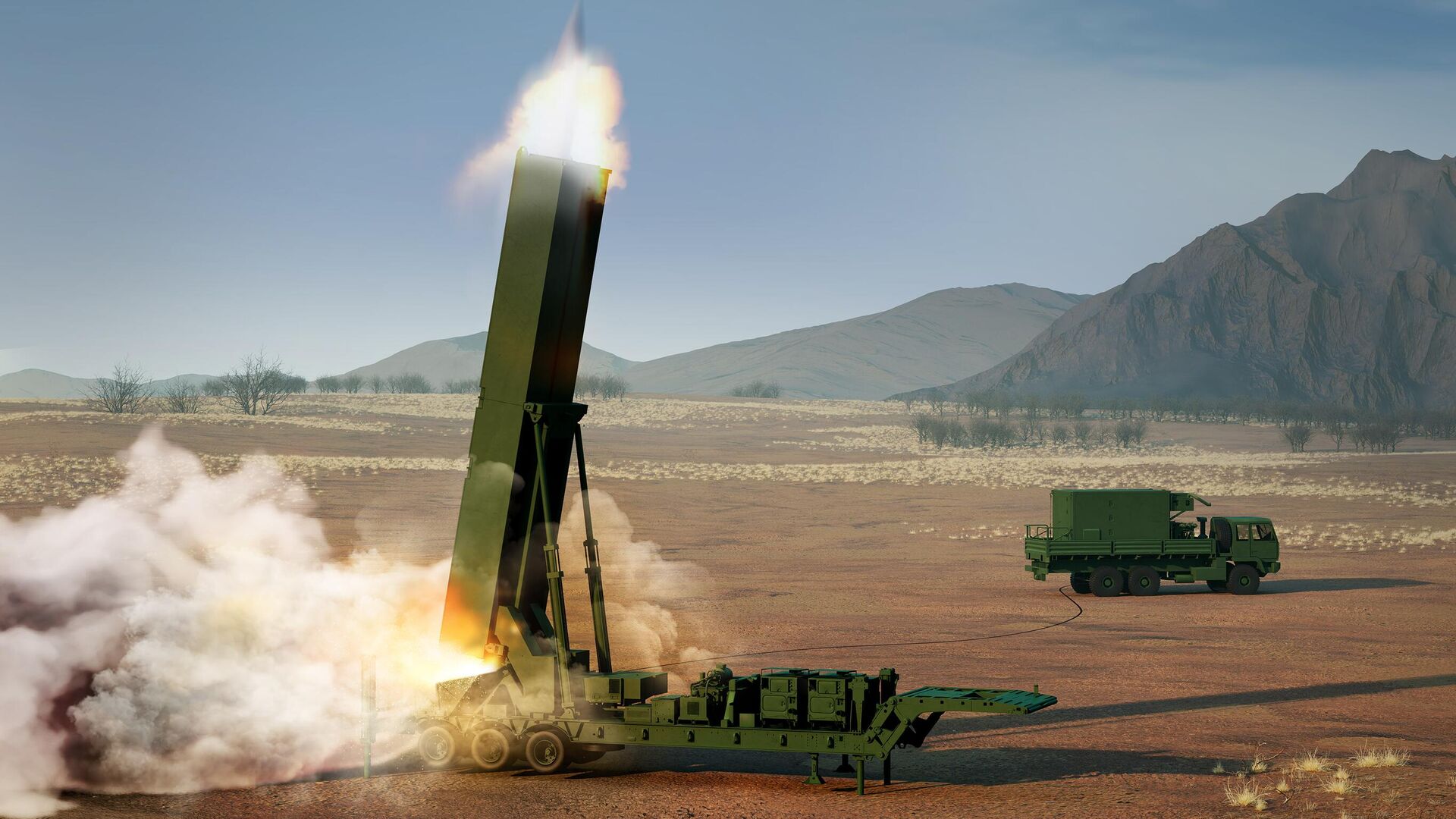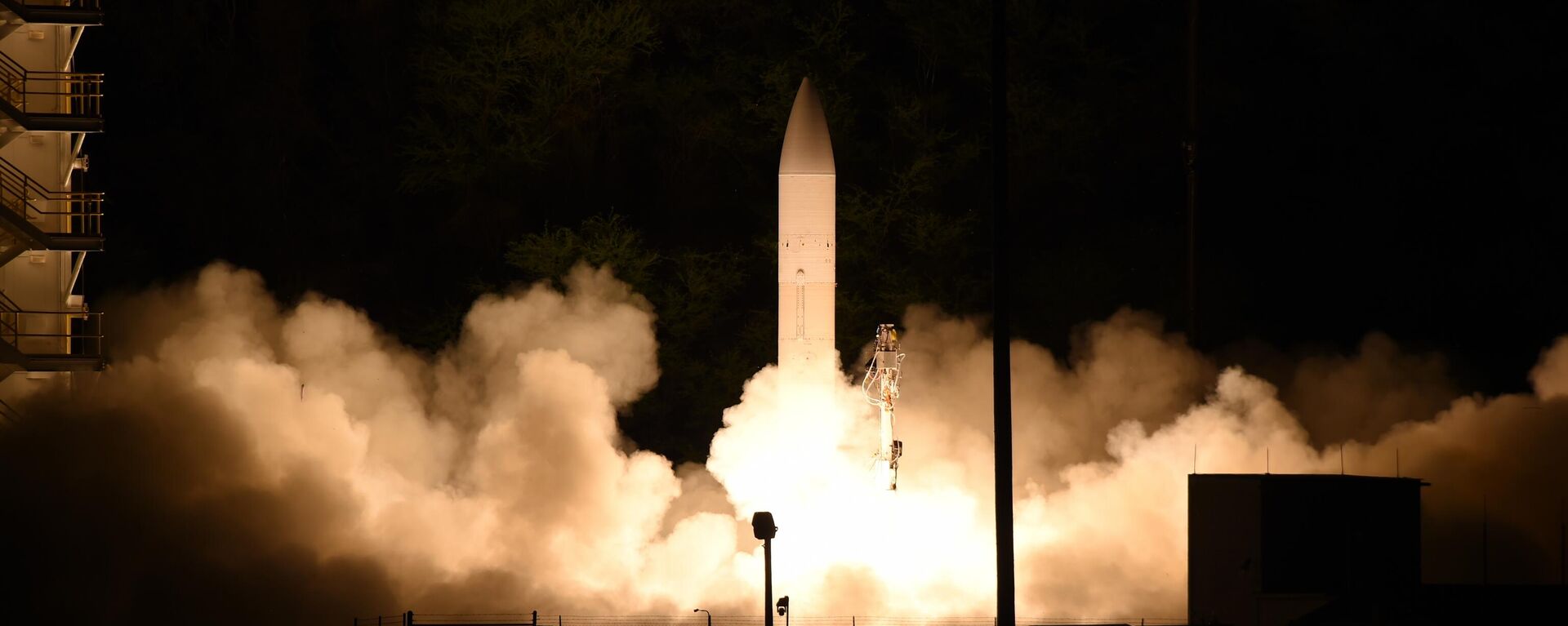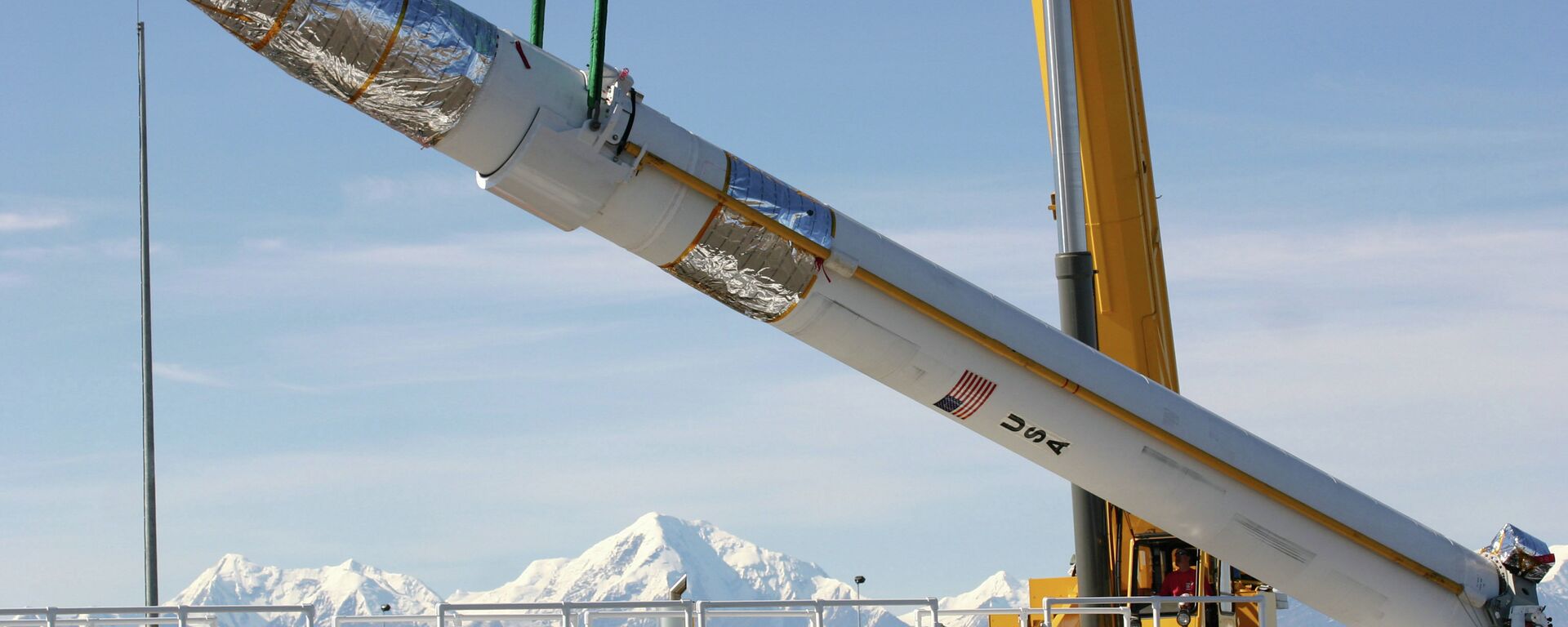https://sputnikglobe.com/20240522/dubious-eagle-why-has-pentagon-pumped-756-mln-into-hypersonic-missile-that-doesnt-fly-1118583903.html
Dubious Eagle: Why Has Pentagon Pumped $756 Mln Into Hypersonic Missile That Doesn’t Fly?
Dubious Eagle: Why Has Pentagon Pumped $756 Mln Into Hypersonic Missile That Doesn’t Fly?
Sputnik International
The US Army has awarded Lockheed Martin another $756 million for its delay-plagued LRHW ‘Dark Eagle’ program, with the contract involving the provision of battery equipment, unspecified logistics, systems and software engineering support.
2024-05-22T10:57+0000
2024-05-22T10:57+0000
2024-05-22T12:26+0000
military
navy
pentagon
air force
cape canaveral
military & intelligence
long-range hypersonic weapon (lrhw)
hypersonic
hypersonic weapons
hypersonic missiles
https://cdn1.img.sputnikglobe.com/img/07e8/05/16/1118583585_0:257:2730:1793_1920x0_80_0_0_c867d686cd53faebd5ae1bfc20153dc8.jpg
The US Army has awarded Lockheed Martin another $756 million for its delay-plagued LRHW "Dark Eagle" program, with the contract involving the provision of battery equipment, unspecified logistics, systems, and software engineering support.In development since 2017, the LRHW’s $41 million apiece truck-launched missiles are expected to be able to accelerate to speeds up to Mach 17, and boast a 3,000 km operational range. The system uses the common All Up Round (AUR) munition also used in the Navy’s Conventional Prompt Strike (CPS) program.But like other US hypersonic missile efforts to date, Dark Eagle has become a somewhat "Dubious Eagle" after a string of testing issues. The Congressional Research Office has counted at least five failures to date:The poor track record of US hypersonic missile programs to date has been surprising, given the tens of billions of dollars in research and development funding lavishly doled out by Congress in annual defense budgets – which typically outpace the defense spending of all of Washington's major adversaries combined.Last month, veteran Russian defense observer and missile expert Dmitry Drozdenko told Sputnik that the reason hypersonic weapons are so difficult to develop comes down not to the ability to accelerate vehicles to hypersonic speeds (which has been possible since virtually the dawning of the missile age), but creating materials that can withstand the ultra-hot temperatures hypersonic missiles encounter during flight – when they are covered by clouds of plasma. The USSR was leagues ahead of the US in the study of plasma physics during the Cold War, with Russia inheriting this invaluable knowledge and putting it to good use to field its first-in-the-world hypersonic missiles.
https://sputnikglobe.com/20240516/playing-catch-up-us-japan-ink-deal-to-co-create-hypersonic-weapon-interceptor-1118468905.html
https://sputnikglobe.com/20240509/us-defenseless-against-russian-hypersonic-missiles-and-iranian-drones---explosive-dod-testimony-1118360351.html
cape canaveral
Sputnik International
feedback@sputniknews.com
+74956456601
MIA „Rossiya Segodnya“
2024
News
en_EN
Sputnik International
feedback@sputniknews.com
+74956456601
MIA „Rossiya Segodnya“
Sputnik International
feedback@sputniknews.com
+74956456601
MIA „Rossiya Segodnya“
why can't us make an operational hypersonic missile, why does us have problems with hypersonic missiles
why can't us make an operational hypersonic missile, why does us have problems with hypersonic missiles
Dubious Eagle: Why Has Pentagon Pumped $756 Mln Into Hypersonic Missile That Doesn’t Fly?
10:57 GMT 22.05.2024 (Updated: 12:26 GMT 22.05.2024) The US Army has been teasing the deployment of its ground-based Long-Range Hypersonic Weapon (LRHW) system since 2021, with the system touted as the Pentagon’s first nearly operational hypersonic missile amid development delays and cancellations plaguing nearly a dozen similar projects for and by the Army, Air Force, Navy, and DARPA.
The US Army has awarded Lockheed Martin another $756 million for its delay-plagued LRHW "Dark Eagle" program, with the contract involving the provision of battery equipment, unspecified logistics, systems, and software engineering support.
In development since 2017, the LRHW’s $41 million apiece truck-launched missiles are expected to be able to accelerate to speeds up to Mach 17, and boast a 3,000 km operational range. The system uses the common All Up Round (AUR) munition also used in the Navy’s Conventional Prompt Strike (CPS) program.
But like other US hypersonic missile efforts to date, Dark Eagle has become a somewhat "Dubious Eagle" after a string of testing issues. The Congressional Research Office has counted
at least five failures to date:
In October 2021, an LRHW test failed when the Common-Hypersonic Glide Body (C-HGB) did not deploy.
In June 2022, the complete LRHW missile system suffered another test failure.
A scheduled LRHW test was canceled in October 2022 to “assess the root cause” of the June 2022 failure.
In March 2023, a scheduled test launch from the Cape Canaveral Space Force Station in Florida was scrapped.
A second planned test at Cape Canaveral was canceled in September 2023, followed by an Army statement that it would not be able to meet the goal of deploying Dark Eagle in the current fiscal year.
A November 2023 review by Army and Navy acquisition execs blamed the delays on unspecified “problems” with the Lockheed-made launcher, and said the issues would take “months” to iron out.
The poor track record of US hypersonic missile programs to date has been surprising, given the tens of billions of dollars in research and development funding lavishly doled out by Congress in annual defense budgets – which typically outpace the defense spending of all of Washington's major adversaries combined.
Last month, veteran Russian defense observer and missile expert Dmitry Drozdenko
told Sputnik that the reason hypersonic weapons are so difficult to develop comes down not to the ability to accelerate vehicles to hypersonic speeds (which has been possible since virtually the dawning of the missile age), but creating materials that can withstand the ultra-hot temperatures hypersonic missiles encounter during flight – when they are covered by clouds of plasma. The USSR was leagues ahead of the US in the study of plasma physics during the Cold War, with Russia inheriting this invaluable knowledge and putting it to good use to field its first-in-the-world hypersonic missiles.
"Technologies are developed by people," Drozdenko explained. "Money is one means of developing a technology, but it can happen that a technology is created with a minimum amount of funds. It can turn out that you have a lot of money, but the technology doesn't work out. Therefore, money is not the main thing here. The main thing is people, and having the appropriate academic knowledge," the observer said.




